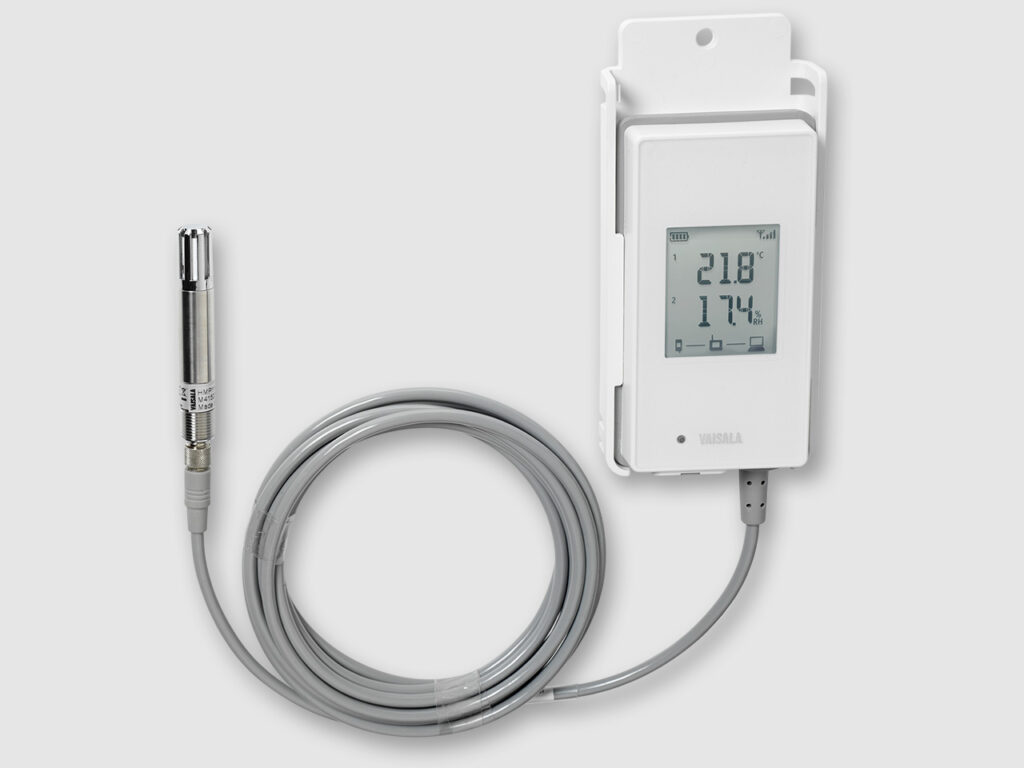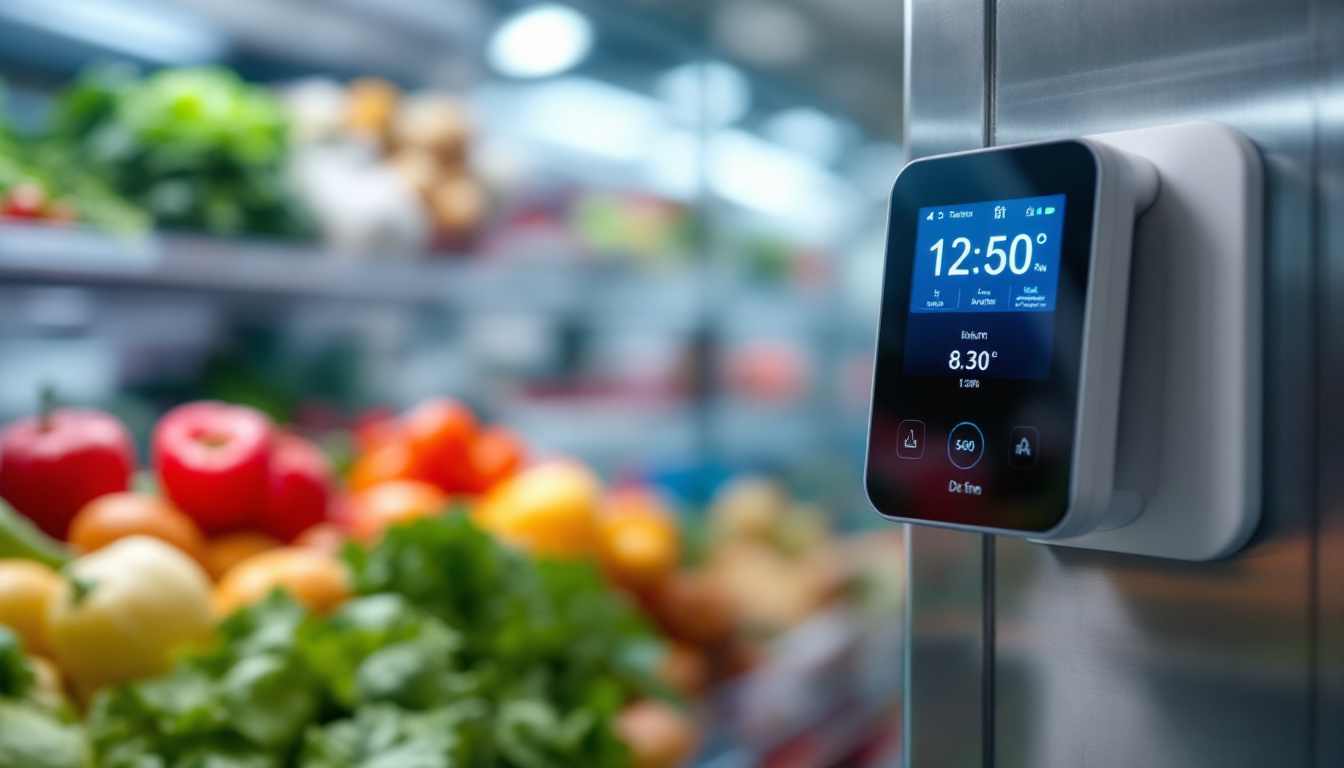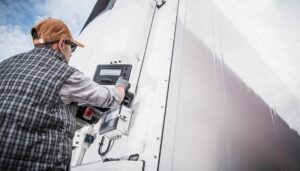Protect perishables with remote temperature monitoring in Australia
In the vast and diverse landscape of Australia, maintaining the quality of perishable goods is a significant challenge for businesses across various sectors. From the bustling markets of Sydney to the remote outback, ensuring that food, pharmaceuticals, and other temperature-sensitive products are kept at optimal conditions is paramount. Remote temperature monitoring systems have emerged as a vital solution, offering real-time data and alerts that help protect these valuable items from spoilage and loss.
The Importance of Temperature Control
Temperature control is crucial for a multitude of industries. In the food sector, for instance, improper temperature management can lead to foodborne illnesses, wastage, and financial losses. Similarly, pharmaceuticals require strict temperature regulation to ensure efficacy and safety. With Australia’s unique climate, which ranges from tropical in the north to temperate in the south, the need for reliable temperature monitoring becomes even more pronounced.
In a country as vast and diverse as Australia, protecting perishables through effective temperature monitoring is essential for businesses across various sectors. Remote temperature monitoring Australia systems offer a reliable solution to ensure that food, pharmaceuticals, and other temperature-sensitive products are kept within safe limits. With real-time data, cost savings, and enhanced customer trust, these systems are not just an investment in technology; they are an investment in the future of a business.
Food Safety Standards
Australia has stringent food safety standards in place, governed by the Food Standards Australia New Zealand (FSANZ). These regulations dictate that food must be stored and transported at specific temperatures to prevent contamination and spoilage. Remote temperature monitoring systems play a crucial role in helping businesses comply with these regulations. By providing continuous monitoring, these systems ensure that any deviations from the required temperature range are promptly addressed. Furthermore, the implementation of these advanced monitoring systems not only safeguards public health but also enhances consumer confidence in the food supply chain. With increasing public awareness about food safety, businesses that prioritise temperature control are likely to see a positive impact on their reputation and customer loyalty.

Pharmaceutical Requirements
In the pharmaceutical industry, temperature control is not just a regulatory requirement; it is a matter of life and death. Vaccines, insulin, and other critical medications can lose their potency if not stored correctly. Remote monitoring systems help pharmacies and healthcare providers maintain the integrity of these products, ensuring they remain effective for patients who rely on them. The ability to receive instant alerts about temperature fluctuations can make all the difference in emergency situations. Additionally, the rise of telehealth services and home healthcare means that the demand for effective temperature control is expanding beyond traditional settings. As patients receive medications at home, ensuring that these products are stored at the correct temperature becomes paramount, further emphasising the need for robust monitoring solutions in every aspect of healthcare delivery.
Read more on: How restaurant temperature monitoring saves money and reduces risk
How Remote Temperature Monitoring Works
Remote temperature monitoring systems utilise advanced technology to track and record temperature data in real-time. These systems typically consist of sensors, data loggers, and software that work together to provide a comprehensive overview of temperature conditions. By employing these technologies, businesses can ensure that their products are stored and transported under optimal conditions, thereby reducing spoilage and maintaining quality.

Components of a Remote Monitoring System
The core components of a remote temperature monitoring system include:
- Temperature Sensors: These devices are placed in storage areas or transport vehicles to measure the ambient temperature continuously. They are often designed to withstand harsh environments, ensuring reliable performance in various conditions.
- Data Loggers: These devices collect and store temperature data over time, allowing for historical analysis and reporting. Many modern data loggers are equipped with wireless capabilities, enabling seamless data transfer to central systems without the need for manual downloads.
- Alert Systems: Most systems come equipped with alert functionalities that notify users via SMS or email when temperatures fall outside the designated range. This feature is particularly crucial for industries such as pharmaceuticals and food services, where temperature deviations can lead to significant losses.
Data Analysis and Reporting
One of the significant advantages of remote temperature monitoring is the ability to analyse data over time. Businesses can generate reports that highlight trends, identify potential issues, and improve overall operational efficiency. This data-driven approach not only aids in compliance but also helps in making informed decisions regarding inventory management and supply chain logistics. Furthermore, the integration of machine learning algorithms into these systems is beginning to revolutionise how data is interpreted, allowing for predictive analytics that can foresee potential temperature fluctuations based on historical patterns. Find more about management on https://www.aku.edu/mcpk/Pages/mshm.aspx
Moreover, the implementation of remote temperature monitoring can significantly enhance customer trust and satisfaction. For instance, companies in the food industry can provide transparency by sharing real-time temperature data with consumers, assuring them that their products have been handled with the utmost care. This level of transparency not only strengthens brand loyalty but also positions businesses as leaders in quality assurance within their respective markets. As technology continues to evolve, the potential applications and benefits of remote temperature monitoring systems are likely to expand, paving the way for even more innovative solutions in various sectors.
Benefits of Remote Temperature Monitoring
The implementation of remote temperature monitoring systems offers numerous benefits that can significantly impact a business’s bottom line.
Real-Time Monitoring
One of the most significant advantages of remote monitoring is the ability to receive real-time updates. Businesses can monitor temperature conditions 24/7, allowing for immediate action if any issues arise. This proactive approach minimises the risk of spoilage and ensures that products remain safe for consumers.
Cost Savings
While the initial investment in remote temperature monitoring technology may seem substantial, the long-term savings can be considerable. By preventing spoilage and ensuring compliance with safety regulations, businesses can avoid costly losses. Additionally, the data collected can lead to more efficient operations, further enhancing profitability.
Enhanced Customer Trust
In today’s market, consumers are increasingly concerned about the safety and quality of the products they purchase. By implementing remote temperature monitoring systems, businesses can demonstrate their commitment to quality and safety. This transparency can enhance customer trust and loyalty, ultimately leading to increased sales and a stronger brand reputation. Click here to find more about quality.
Choosing the Right System
With various remote temperature monitoring solutions available in Australia, selecting the right system can be daunting. Several factors should be considered to ensure the chosen system meets the specific needs of a business.
Scalability
As businesses grow, their monitoring needs may change. It is essential to choose a system that can scale with the business. This includes the ability to add more sensors or integrate with existing software systems seamlessly.
Ease of Use
The user interface of the monitoring system should be intuitive and straightforward. A complicated system can lead to errors and inefficiencies, negating the benefits of the technology. Look for systems that offer user-friendly dashboards and easy access to data and alerts.
Support and Maintenance
Reliable customer support is crucial when implementing any new technology. Ensure that the provider offers comprehensive support, including installation, training, and ongoing maintenance. This support can significantly impact the effectiveness of the monitoring system.
Case Studies: Success Stories in Australia
Several Australian businesses have successfully implemented remote temperature monitoring systems, yielding impressive results.
Food Distribution Companies
A leading food distribution company in Melbourne faced challenges with maintaining the temperature of its refrigerated trucks. After implementing a remote monitoring system, the company reported a 30% reduction in spoilage rates. The real-time alerts enabled drivers to address temperature fluctuations immediately, ensuring that products arrived at their destinations in optimal condition.
Pharmaceutical Suppliers
A pharmaceutical supplier in Brisbane adopted a remote temperature monitoring solution to comply with stringent regulatory requirements. By utilising the system, the company improved its compliance rate to 100%, avoiding potential fines and enhancing its reputation in the industry. The data collected also allowed for better inventory management, reducing waste and increasing profitability.
Conclusion
As the demand for quality and safety continues to rise, businesses that adopt remote temperature monitoring will be better positioned to thrive in an increasingly competitive market. By prioritising the protection of perishables, companies can safeguard their reputation, ensure compliance, and ultimately contribute to a healthier and safer Australia.

